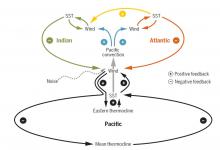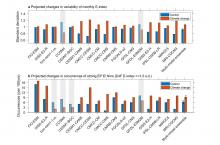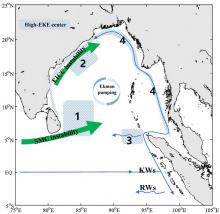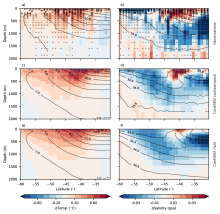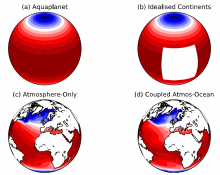Pantropical climate interactions, more vigorous than previously thought
Submitted by Jing Li on Mon, 2019-03-04 03:59The El Niño-Southern Oscillation (ENSO) affects the rest of the world’s tropics by perturbing global atmosphere circulation, inducing anomalous Sea surface temperatures over the tropical Indian Ocean and Atlantic Ocean. The associated wind variations in the Indian Ocean and in the equatorial and north tropical Atlantic in turn contribute to ENSO dynamics. In addition, the tropical interbasin linkages vary on decadal time scales.





